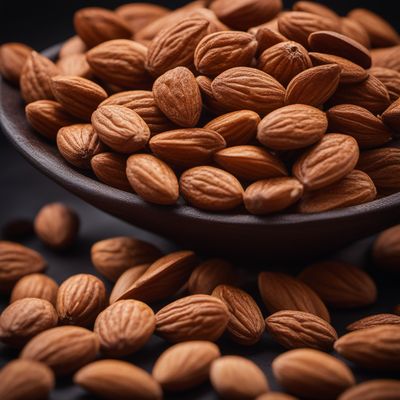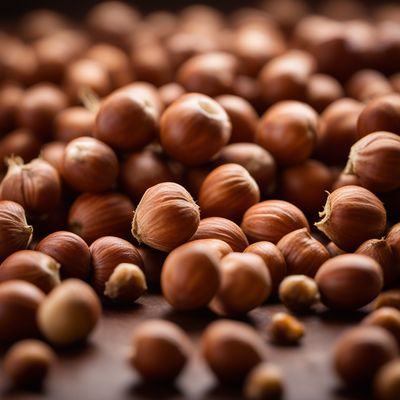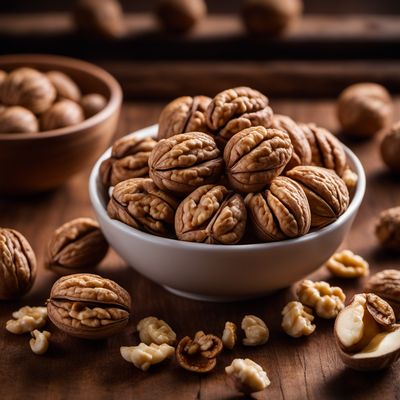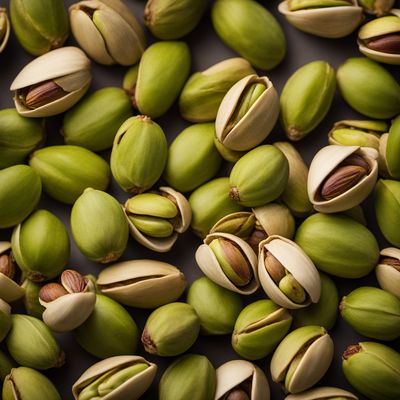
Ingredient
Tree nuts
Nature's Nutty Treasures: Tree Nuts
Tree nuts encompass a wide variety of nuts, including almonds, walnuts, cashews, pistachios, and more. They are characterized by their hard shells and the presence of a single seed or kernel inside. Each type of tree nut has its own unique flavor, texture, and appearance, making them versatile ingredients in both sweet and savory dishes.
Origins and history
Tree nuts have been consumed by humans for thousands of years and have a rich cultural and historical significance. They are native to different regions around the world, with almonds originating in the Middle East, walnuts in Central Asia, and cashews in Brazil. Today, tree nuts are cultivated globally and are an essential part of many cuisines.
Nutritional information
Tree nuts are a nutrient-dense food, packed with healthy fats, protein, dietary fiber, vitamins, and minerals. They are also a good source of antioxidants. However, it is important to note that tree nuts are high in calories, so portion control is key. Each type of tree nut has its own unique nutritional profile.
Allergens
Tree nuts are known to cause allergic reactions in some individuals. Common tree nut allergies include almonds, walnuts, cashews, and pistachios. It is crucial to be aware of any allergies or sensitivities and to read food labels carefully to avoid potential allergens.
How to select
When selecting tree nuts, look for ones that are free from cracks, mold, or any signs of rancidity. The nuts should feel heavy for their size and have a fresh aroma. If purchasing shelled nuts, ensure that the shells are intact and not damaged. It is best to buy tree nuts in small quantities to ensure freshness.
Storage recommendations
To maintain the freshness and quality of tree nuts, store them in an airtight container in a cool, dry place, such as a pantry or refrigerator. This helps prevent the nuts from becoming rancid or absorbing odors from other foods. Shelled nuts generally have a shorter shelf life than unshelled nuts.
How to produce
Growing tree nuts requires specific climatic conditions and can be challenging for home gardeners. However, some tree nuts, such as almonds and walnuts, can be grown in certain regions with the right soil and climate. It is advisable to consult with local agricultural extension services or nurseries for guidance on growing specific tree nuts.
Preparation tips
Tree nuts can be enjoyed in various ways, including raw, roasted, or as an ingredient in both sweet and savory dishes. They can be used as a topping for salads, oatmeal, or yogurt, ground into nut butters, or incorporated into baked goods and desserts. Tree nut flours are also popular alternatives for gluten-free baking.
Culinary uses
Tree nuts are widely used in both sweet and savory dishes. They are commonly found in desserts such as cakes, cookies, and pies. Tree nuts are also used in savory dishes like salads, stir-fries, and nut-based sauces. Additionally, they are a popular snack on their own or in trail mixes.
Availability
Tree nuts are cultivated in various regions around the world, including the United States, Spain, Italy, Australia, and China.
More ingredients from this category » Browse all

Almonds and similar-
The Nutty Delicacy: Almonds

Brazil nuts and similar-
"The Nutty Delights: Exploring the World of Brazil Nuts and Similar Varieties"

Cashew nuts and similar-
The Creamy Crunch of Cashews

Hazelnuts and similar-
The Nutty Delights

Pine nut kernels and similar-
The Nutty Delicacy: Pine Nut Kernels

Macadamias and similar-
The Creamy Nut Delight

Walnuts and similar-
The Nutty Goodness of Walnuts

Pistachios and similar-
Utilizing Every Part: Exploring Offal

Pecans and similar-
Nutty Delights

Coconuts and similar-
The Versatile Coconut

Other Tree nuts
Beyond the Ordinary: Exploring Other Tree Nuts

Chestnuts and similar-
The Nutty Delights
